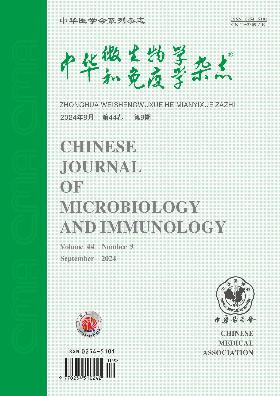Effects of sample processing modes on high-throughput sequencing of coronavirus whole genome
Q4 Immunology and Microbiology
引用次数: 0
摘要
目的:以最大的RNA病毒(人类冠状病毒,HCoV)为代表,研究不同的测序前样本处理模式对高通量测序(HTS)全基因组测序结果的影响。方法:以细胞培养的人冠状病毒HCoV-OC43株为代表样本,按测序前处理方式分为不同组:未处理组、核酸提取前DNase和RNase处理组、DNA提取后DNase处理组,以及核酸提取前的DNase和RNase处理和核酸提取后的DNase处理组。分别通过直接RNA测序(无扩增)和序列独立单引物扩增(SISPA)后的DNA测序分析各组的核酸样品。结果:不同组间病毒基因组覆盖率无显著差异。核酸提取后的DNA酶处理组通过直接RNA测序获得了最高的基因组覆盖率和测序准确性,SISPA扩增有效提高了病毒读取率和每个基因座的测序深度。结论:本研究为冠状病毒等RNA病毒的全基因组测序提供了一种优化的技术策略。本文章由计算机程序翻译,如有差异,请以英文原文为准。
Effects of sample processing modes on high-throughput sequencing of coronavirus whole genome/ 不同样本测序前处理方案对冠状病毒基因组高通量测序结果的影响
Objective: To study the effects of different pre-sequencing sample processing modes on the results of whole genome sequencing with high-throughput sequencing (HTS) by taking the largest RNA virus (human coronavirus, HCoV) as the representative. Methods: Cell-cultured human coronavirus HCoV-OC43 strains were used as the representative samples and divided into different groups based on pre-sequencing processing modes as follows: untreated group, DNase and RNase treatment before nucleic acid extraction group, DNase treatment after nucleic acid extraction group, and DNase and RNase treatment before nucleic acid extraction and DNase treatment after nucleic acid extraction group. Nucleic acid samples of each group were analyzed by direct RNA sequencing (without amplification) and DNA sequencing after sequence independent single primer amplification (SISPA), respectively. Results: No significant difference in viral genome coverage rates was observed between different groups. The highest genome coverage and sequencing accuracy were obtained in DNase treatment after nucleic acid extraction group by direct RNA sequencing, and the ratio of viral reads and the sequencing depth of each locus were effectively improved by SISPA amplification. Conclusions: This study provided an optimized technical strategy for whole genome sequencing of RNA viruses such as coronavirus.
求助全文
通过发布文献求助,成功后即可免费获取论文全文。
去求助
来源期刊

中华微生物学和免疫学杂志
Immunology and Microbiology-Virology
CiteScore
0.50
自引率
0.00%
发文量
6906
期刊介绍:
Chinese Journal of Microbiology and Immunology established in 1981. It is one of the series of journal sponsored by Chinese Medical Association. The aim of this journal is to spread and exchange the scientific achievements and practical experience in order to promote the development of medical microbiology and immunology. Its main contents comprise academic thesis, brief reports, reviews, summaries, news of meetings, book reviews and trends of home and abroad in this field. The distinguishing feature of the journal is to give the priority to the reports on the research of basic theory, and take account of the reports on clinical and practical skills.
 求助内容:
求助内容: 应助结果提醒方式:
应助结果提醒方式:


